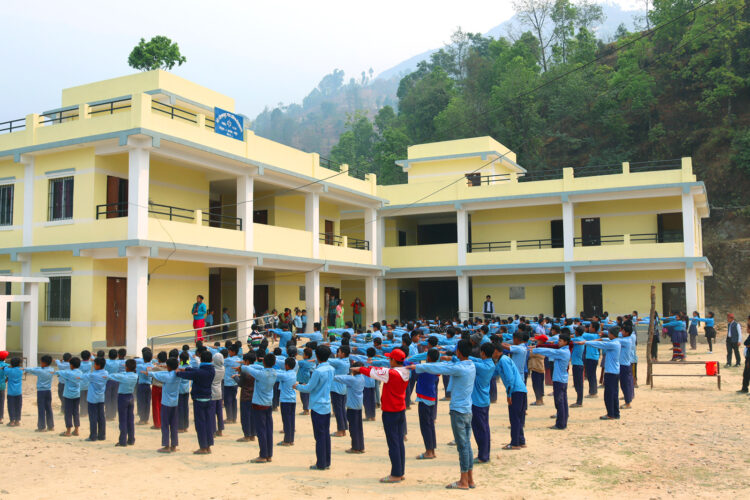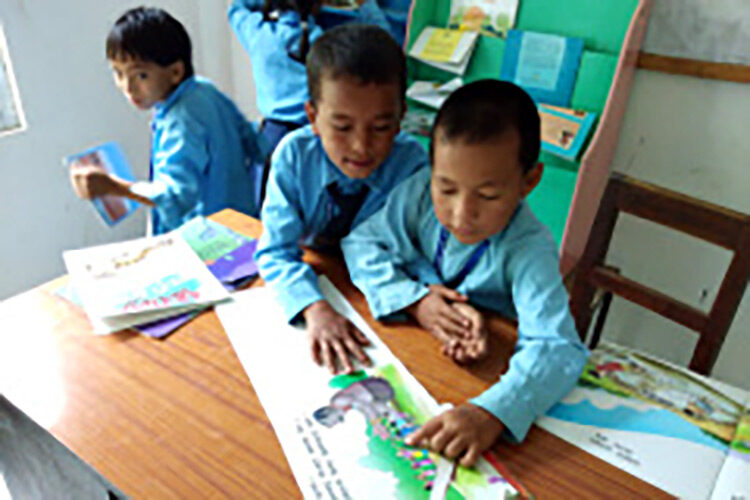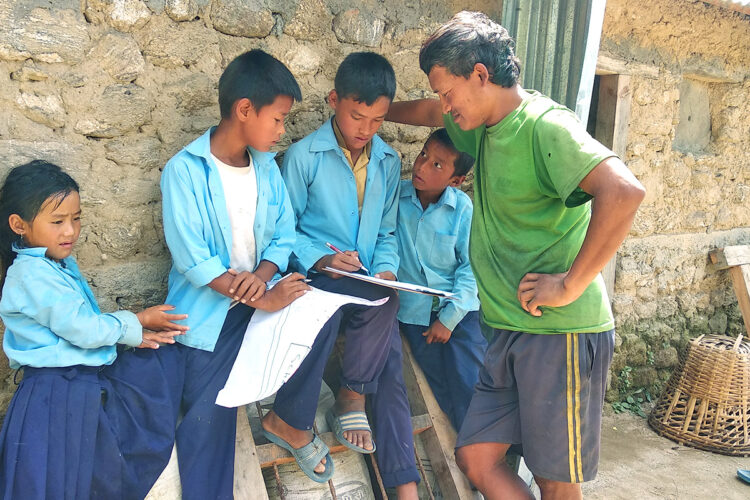 Nepal
Nepal
We helped earthquake-damaged schools rebuild their school buildings and are now engaged in improving the quality of education to reduce disparities.
- TOP
- What We Do
- Nepal
Background of Activities
With most of its land covered with hills that are over 1,000 meters above sea level, Nepal lacks major industries and remittances from migrant workers accounts for 30 percent of its national income. Many children are forced to leave school before graduation to work in farms or to become child workers for financial reasons. Only 71.3 percent graduate from elementary school.
What We Do
After opening our office in Kathmandu in 2016, we carried out school construction and disaster prevention education projects. Since 2020, we have been working on three education projects to improve the quality of education both in and outside school.

In Nepal, which is marked by a stagnant adult literacy rate of 66 percent, community libraries run by residents independently are precious places for adults to learn outside of schools. We rebuild community libraries. Community libraries we rebuild are complete with rooms for children, women and young people, training and computer rooms, as well as reading rooms. In addition, we help community organizations that operate the libraries, as well as librarians who work at the libraries, to improve their skills by providing them with training. Once a new community library opens, we provide people in the community, men and women, young and old, with a wide range of learning opportunities, such as story time, book review competitions, computer classes, and leadership training for the empowerment of women and the young.
_.jpg)
In 2015, Nepal adopted a new constitution with provisions for diversity and decentralization. Following that, the country’s education curricula were also redesigned to include a new subject, regional studies. In this subject, which is similar to integrated studies in Japanese schools, children learn about their regions on their own initiative through group work, discussion, and fieldwork. In most municipalities, however, due to shortages of financial and human resources, learning plans for regional study have not been created and the subject is thus not taught in school. In Raksirang Rural Municipality, one of our target areas, in Makwanpur District, the population of indigenous people is very dense and the area’s school attendance rate is significantly low, compared to the national average, and this has become a problem. Our project provides teachers with training in student-centered teaching and develops textbooks, teachers’ manuals, and teaching materials for regional study. Through these efforts, we help to improve teachers’ teaching skills and, accordingly, the quality of education.
連携 学校給食改善事業(栄養教育活動)_防災事業支援対象校シャンティ・デビ小学校での給食の様子-2_-1440x960.jpg)
As Nepal rapidly modernizes, childhood malnutrition and obesity due to unhealthy diets, such as excessive junk food intake, is becoming a problem. The World Food Programme (WFP), the UN organ that handles food issues, is implementing a school meal improvement project in Nuwakot District in order to improve school kitchen facilities and enhance municipalities’ abilities to provide adequate nutrition. Based on our experience of providing the community with disaster prevention education, as well as our expertise in education, we participate in their project through our nutrition education activities. We make paper theater (KAMISHIBAI) slides for nutrition education. We also provide teachers with nutrition education training. The goal of the WFP project, as a whole, is to help schools and local governments provide children with well-balanced meals using local ingredients, goods, and human resources, so that children will grow up healthy in both body and mind.
Activities So Far
In April 25, 2015, a M7.8 earthquake struck about 81 km northwest of Kathmandu, the capital, killing 8,900 people and destroying 600,000 buildings completely and 270,000 partially, including 7,753 school buildings. In the wake of this disaster, we conducted emergency relief activities until the end of 2016.





